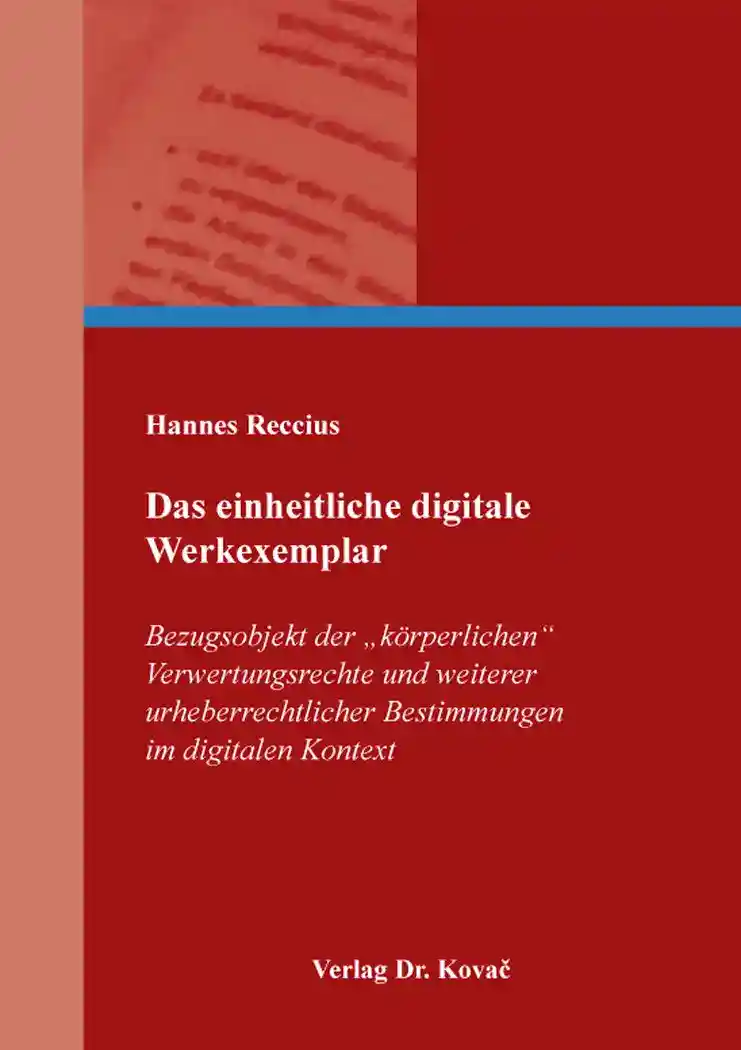Hannes RecciusDas einheitliche digitale Werkexemplar
Bezugsobjekt der „körperlichen“ Verwertungsrechte und weiterer urheberrechtlicher Bestimmungen im digitalen Kontext
Studien zum Gewerblichen Rechtsschutz und zum Urheberrecht, volume 164
Hamburg 2023, 324 pages
ISBN 978-3-339-13496-7 (print)
ISBN 978-3-339-13497-4 (eBook)
Rezension
[…] Zusammengefasst ist dem Autor eine wissenschaftlich bereichernde, sehr gut begründete und durchdachte Arbeit gelungen. Lässt man sich erst einmal auf die klar definierten Begrifflichkeiten ein, erscheinen die Ergebnisse jedenfalls logisch, wenn nicht gar zwingend. Es bleibt daher abzuwarten, inwieweit sich die Rechtsprechung aus diesem Fundus an tiefschürfenden Gedanken zum Umgang mit Digitalisaten bedient, um neue technische Herausforderungen sachadäquat innerhalb des tradierten Urheberrechtssystems zu lösen. Für Experten des Urheberrechts kann eine uneingeschränkte Empfehlung ausgesprochen werden – ein Must-have!
About this book deutschenglish
Especially since the CJEU’s UsedSoft decision in 2012, there has been a dispute in copyright literature and practice in Germany and in Europe as to whether the distribution right in digital copies of works could be exhausted if the copies were created by means of online transmission. Following more recent rulings of the CJEU, for example the Tom Kabinet decision at the end of 2019, the discussion was taken up again and continued.
However, this issue alone does not adequately address the problems surrounding the distribution and use of digital copies of works. On the one hand, there is already the question of whether the distribution right – according to the traditional classification a right to the physical exploitation of the work – can cover the transmission of digital content by incorporeal means, e.g. by download from a server, and how it is then to be distinguished from the right of making available to the public. In addition, other differences, often technical in nature, make it more difficult to classify digital acts of exploitation and use with legal certainty compared to the analogue use of works. The boundaries between tangible and intangible use of works, which were still clear in the analogue environment, seem to be blurring.
Given this background, the author analyses the CJEU’s case law on the transfer of digital copies of works in relation to various copyright directives. Based on the fundamental beliefs of the court and the historical significance of exploitation rights, the author develops a functional understanding of the concept of reproduction and the copy. This makes it possible to apply the “physical” exploitation rights as well as other copyright norms linked to the “copy” of the work in the digital environment according to their original meaning for the exploitation of works.
In this way, equal treatment of analogue and digital forms of use of works is to be achieved without restricting the legitimate exploitation interests of authors or the rights of use of cultural consumers.
